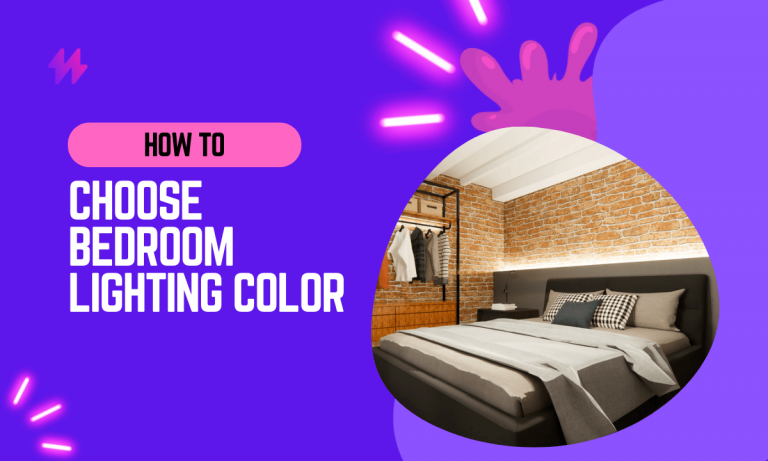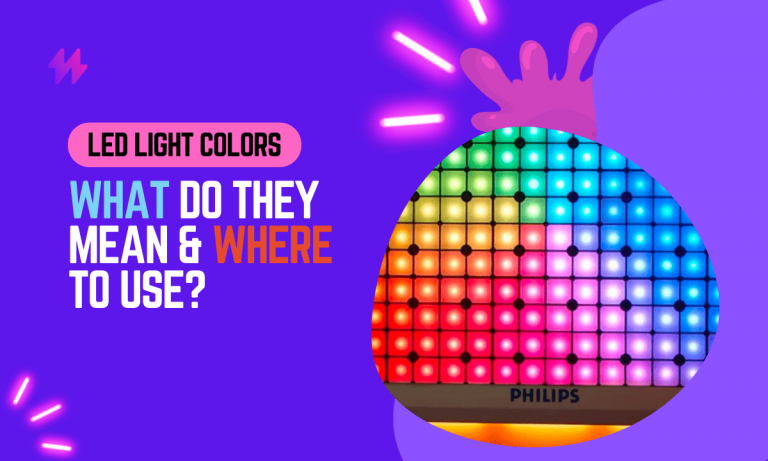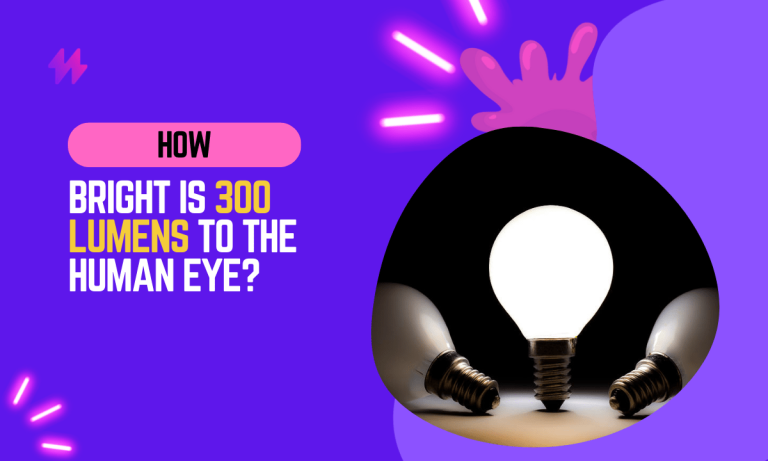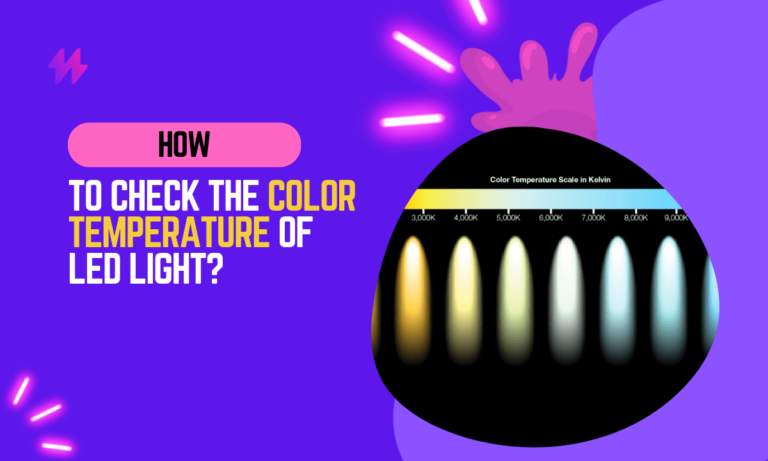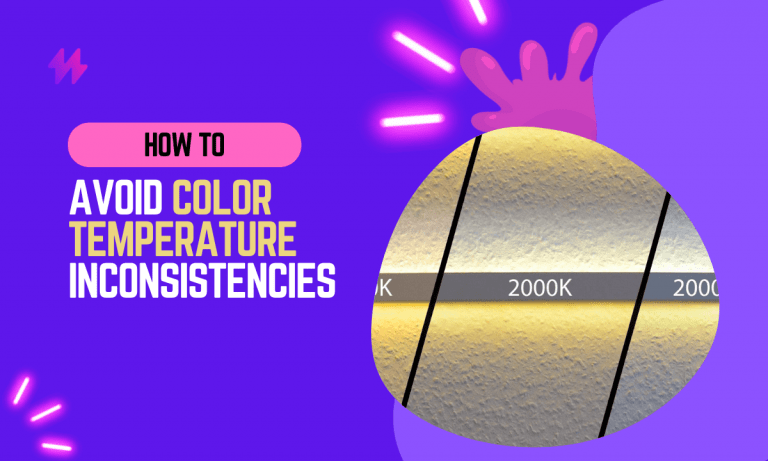2700K vs 3000K – How to Choose Lighting Color?
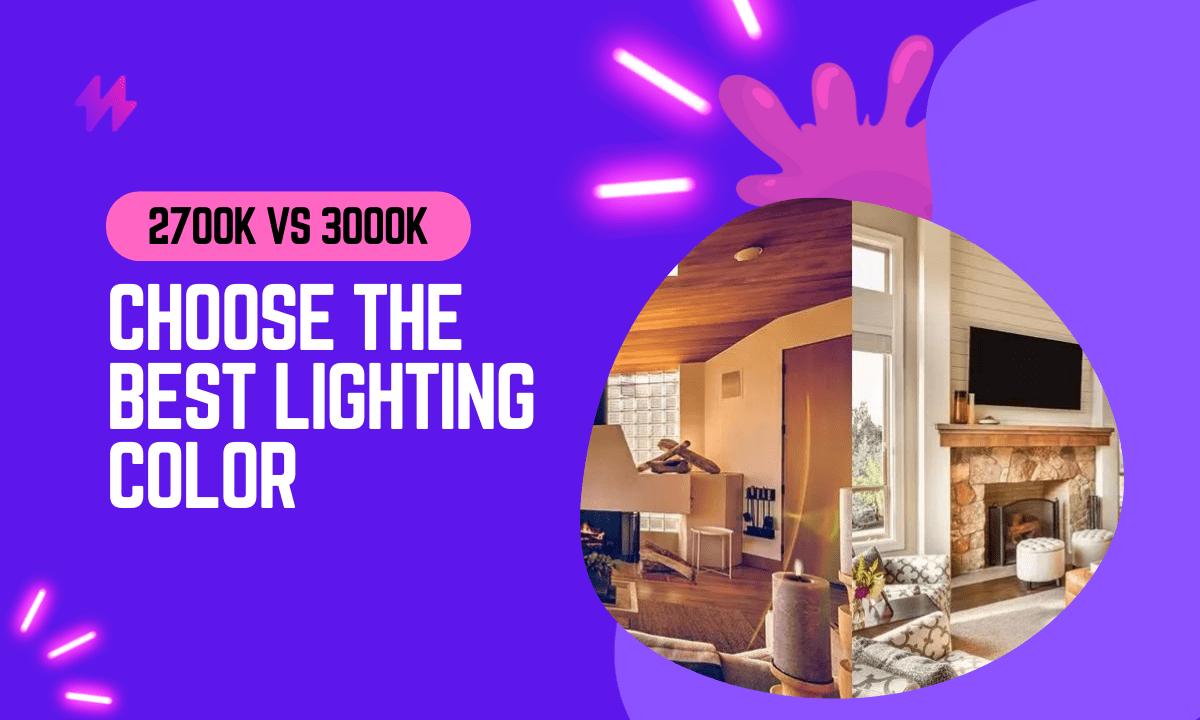
If you’re in the market for a new light bulb, you may have noticed that there are several different options available in terms of color temperatures. But what exactly is color temperature, and how does it affect the appearance of light?
In this blog post, we’ll delve into the differences between 2700K and 3000K light bulbs and explore their common uses and characteristics. Understanding the differences between 2700K and 3000K can help you make the right choice for your home or business.
Whether you’re looking to create a warm and cozy atmosphere or a bright and focused light, this post will provide all the information you need to make an informed decision.
2700K vs 3000K: What’s the Difference?
The main difference between 2700K and 3000K is the hue of the light they produce. 2700K is warmer and more yellow, while 3000K is slightly cooler and more white.
Color temperature is a way to describe the hue of a particular type of light source, measured in degrees Kelvin (K). A lower color temperature corresponds to a warmer, more yellow hue, or orange hue, while a higher color temperature corresponds to a cooler, more blue light.
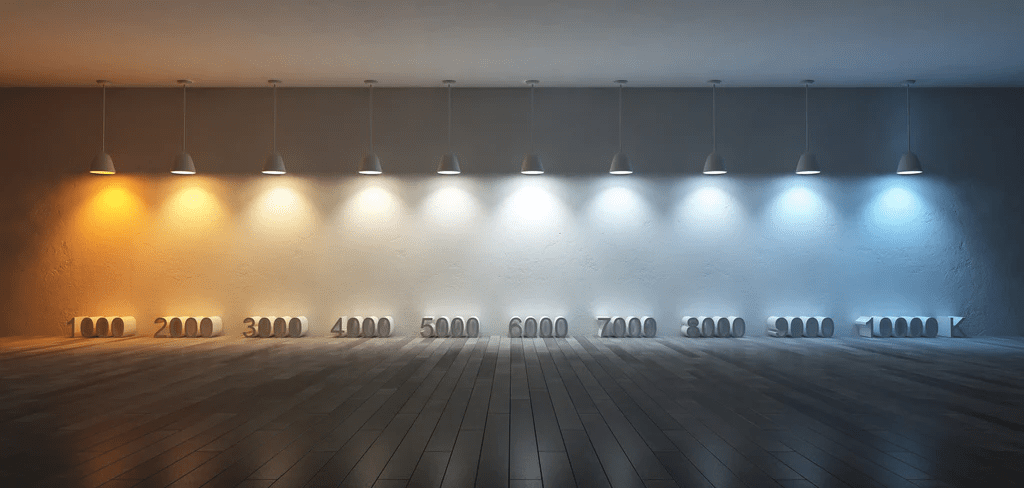
2700K is considered a warm white color temperature and is often used in residential and commercial settings to create a cozy, inviting atmosphere. It is often used in living rooms, bedrooms, and restaurants.
3000K is also considered a warm white color temperature, but it is slightly cooler than 2700K. It is often used in task lighting, such as in an office or workshop setting, where a brighter, more focused light is desired.
Different Color Temperatures & Usage
There are many different lighting colors available, each with its own unique appearance and effect on a space. Some common lighting colors include:
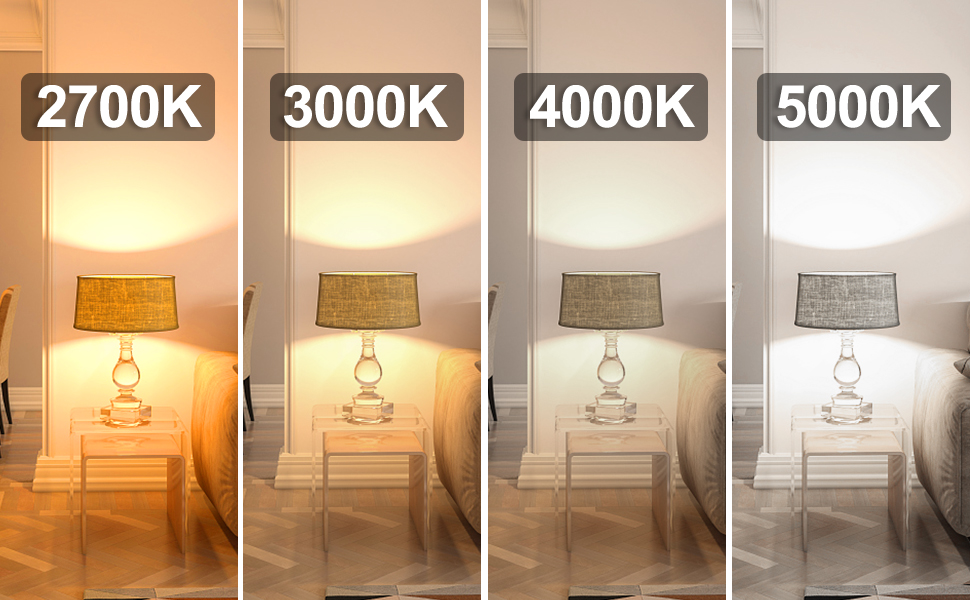
- 2700K: This color is often described as “warm white” and has a yellowish-orange hue. It is commonly used in living rooms, bedrooms, and other areas where a cozy and inviting atmosphere is desired.
- 3000K: This color is similar to 2700K but has a slightly cooler, more neutral appearance. It is often used in kitchens, bathrooms, and other areas where a brighter, more energizing light is desired.
- 4000K: This color is often referred to as “cool white” and has a bluish-white hue. It is commonly used in offices, hospitals, and other areas where a bright, crisp light is desired.
- 5000K: This color is known as “daylight” and has a bright, white appearance. It is often used in workshops, garages, and other areas where a high level of visibility is needed.
In general, warmer lighting colors (2700K and 3000K) can create cozy and ambient lighting, while cooler colors (4000K and 5000K) can provide a brighter, more energizing light. The right lighting color for a space will depend on the desired mood and ambiance, as well as the specific activities and tasks being performed in the space.
It’s important to note that the appearance of a lighting color can vary depending on the type of bulb or fixture being used. For example, an incandescent light bulb will have a different appearance than a LED bulb when both are set to the same color temperature.
Additionally, the effect of a lighting color on a space can also be influenced by other factors, such as the color of the walls and furnishings, the amount of natural light in the space, and the overall design of the space.
When choosing a lighting color, it’s important to consider all of these factors and how they will work together to create the desired atmosphere in a space. It may also be helpful to experiment with different colors and settings to find the right combination for your space.
2700K vs 3000K for Kitchen Lighting
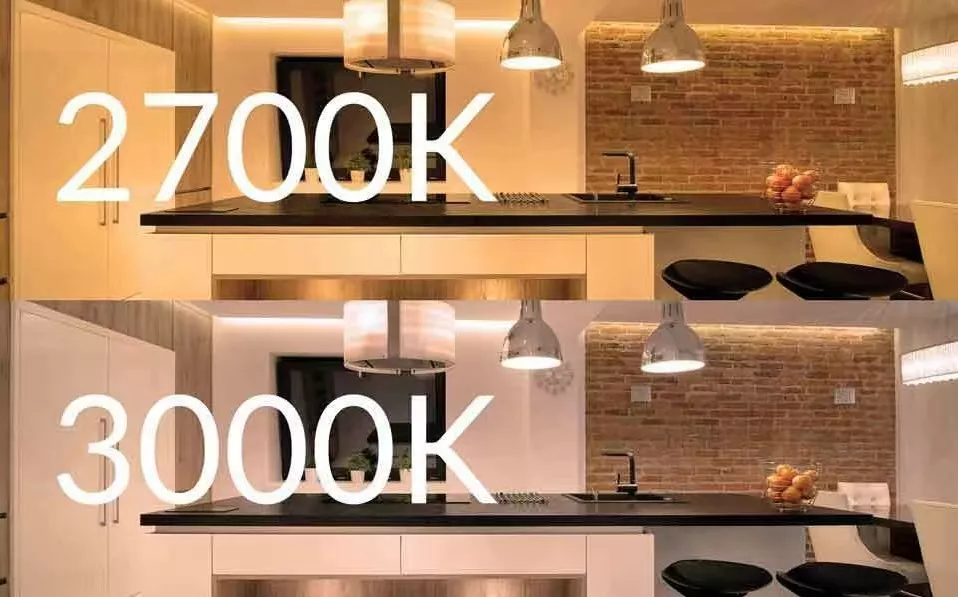
2700K light LED bulb produces a brighter, more focused light, while 3000K light bulbs produce a warmer, more comfortable light. When choosing between 2700k and 3000k LED light bulb for your kitchen, it’s important to consider what you’ll be using the lights for.
If you have a traditional-style kitchen with darker wood cabinetry, 3000K can be a great light color temperature. Warm white and Soft white can highlight wood grains and are recommended for earthy tones. 2700K and 3000K are primarily used in residential settings.
If you’ve got a more contemporary style kitchen with white cabinetry though, lean towards 3000K or even towards 4000K or 5000K. Warm light colors temperatures can potentially make white cabinets look pink and dull.
So, when choosing between 2700k and 3000k LED light bulbs for your kitchen, consider your kitchen’s style and what you’ll be using the lights for. If you have a traditional-style kitchen, 2700K LEDs may be the better choice. If you have a more contemporary style kitchen, 3000K LEDs would be the better option.
Learn more: How to choose LED light strip kit for Kitchen Cabinet Lighting
2700K vs 3000K for Bathroom Lighting
The ideal color temperature for a bathroom is between 3000K and 4000K. These can also be referred to as soft-white and cool-white. For most, a 2700K color temperature is just too yellow for a bathroom setting.
After all, we want bathrooms to appear bright, clean, and fresh. In order to achieve that feeling, it’s best to use a light with a bit more cool tones to it. 2700K light bulbs produce a warmer light, while 3000K light bulbs produce a cooler, more refreshing light.
If you’re looking for bathroom lighting that will make your space appear bright, clean, and fresh, then 3000K LEDs would be the better choice.
2700K vs 3000K for Bedroom Lighting
The best color temperatures for a bedroom are 2000K and 2700K. This color temperature range produces a warm, inviting light that is perfect for relaxing. 3000K light bulb produces a cooler, more refreshing light that may be too harsh for a bedroom set.
If you’re looking for bedroom lighting that is warm and inviting, then 2700k LEDs would be the better choice.
2700K vs 3000K for Living Rooms Lighting
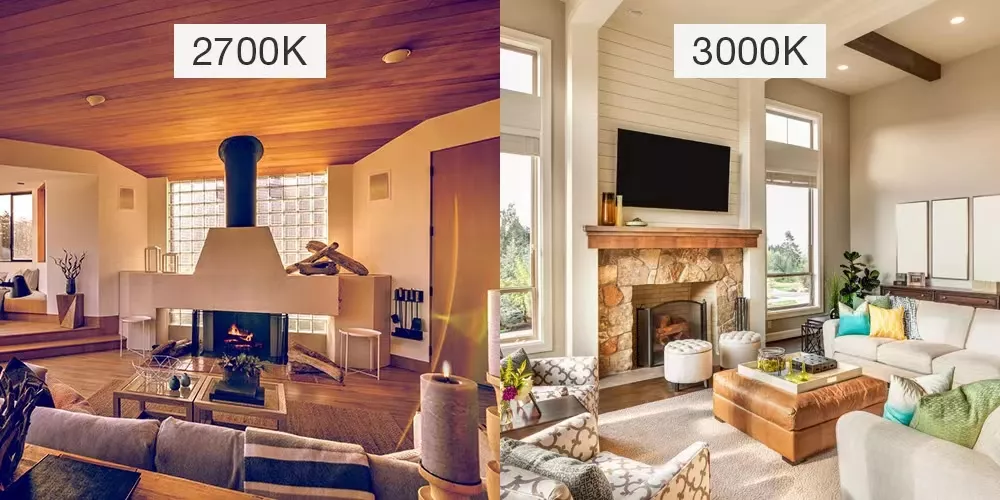
2700K and 3000K light bulbs produce a warm, inviting light that is perfect for relaxing in. If you’re looking for living room lighting that is warm and inviting, then 2700k or 3000k LEDs would be the better choice.
As 3000K, and especially 2700K, are better with earthy tones and wood grains, you’ll want to be ok with a warmer light color temperature. These two color temperatures work best in living rooms that are more traditional or transitional in style.
If you’ve got a more contemporary or modern living room, go with a cooler temperature of 3500K to 4800K (neutral white to cool white). That’s not to say a light fixture with a warm color temperature can’t be used in a contemporary setting and vice versa.
Truly, it comes down to personal preference and the mood that works best for you and your space.
Must read: 3 Factors to Avoid Color Temperature Inconsistencies
Final Words
In conclusion, the choice between 2700K and 3000K lighting colors is subtle yet significant, impacting the atmosphere and functionality of a space. Both color temperatures fall within the warm white spectrum, making them excellent choices for creating inviting and relaxing environments. The 2700K option emits a softer and warmer light, akin to the glow of an incandescent bulb. This warmth makes it particularly suitable for residential spaces such as living rooms, bedrooms, and dining areas where comfort and coziness are prioritized. The golden hue enhances the richness of wood furniture and other earth tones, making spaces feel welcoming and snug.
On the other hand, 3000K provides a slightly cooler, more neutral white light that bridges the gap between warm and stark white. This temperature is often preferred in areas where both relaxation and concentration are required, such as kitchens and bathrooms. It provides enough clarity for performing tasks effectively without sacrificing the welcoming quality of warm light. The 3000K setting is also beneficial in retail environments or showrooms where a slightly brighter ambiance can make merchandise appear more appealing without the harshness that higher color temperatures might impart. When selecting between 2700K and 3000K, consider the activities that will take place in the space, the natural light available, and the desired mood. Such considerations will ensure that the lighting enhances both the aesthetics and the functionality of the area, providing comfort and utility in equal measure.

